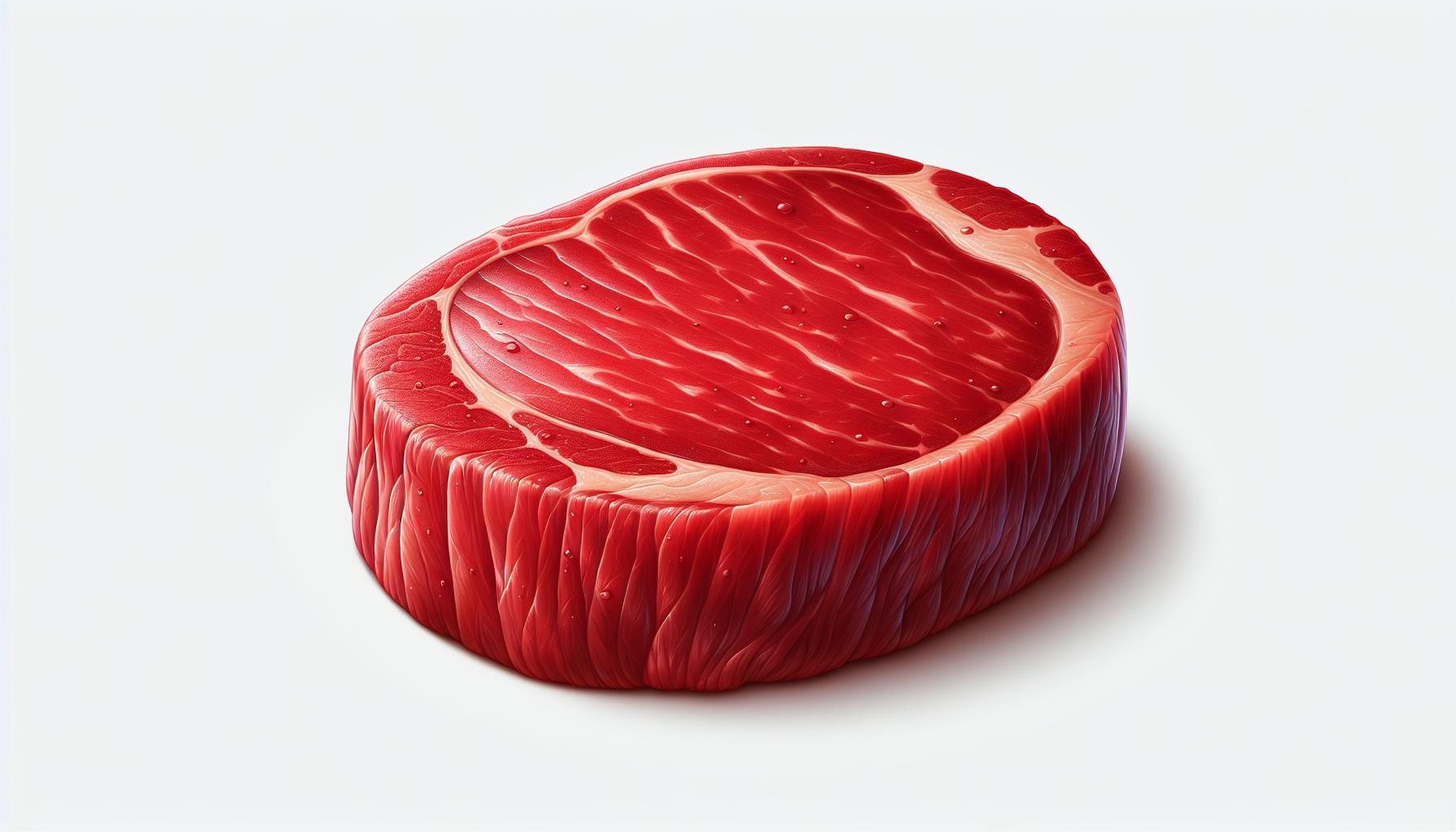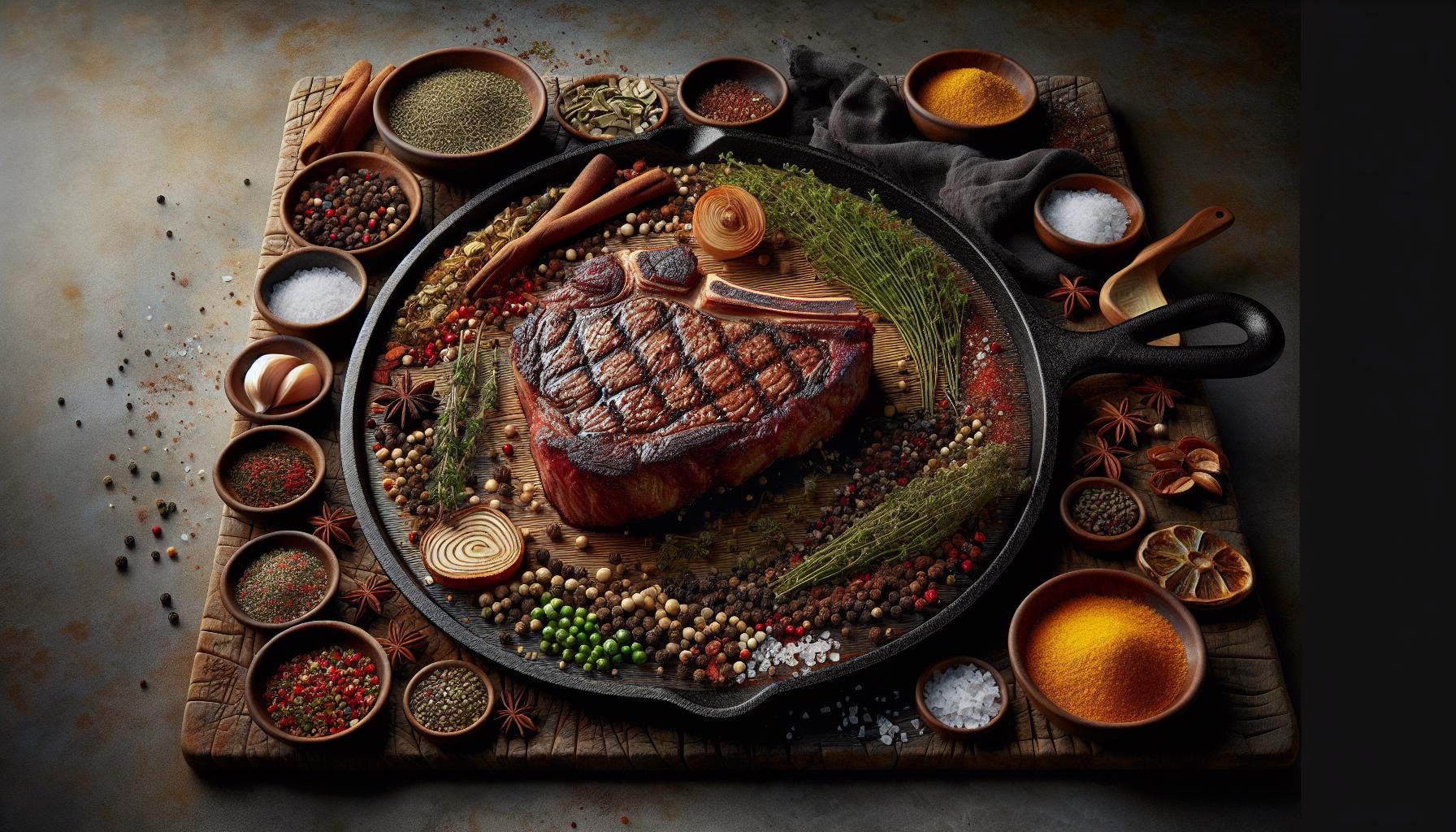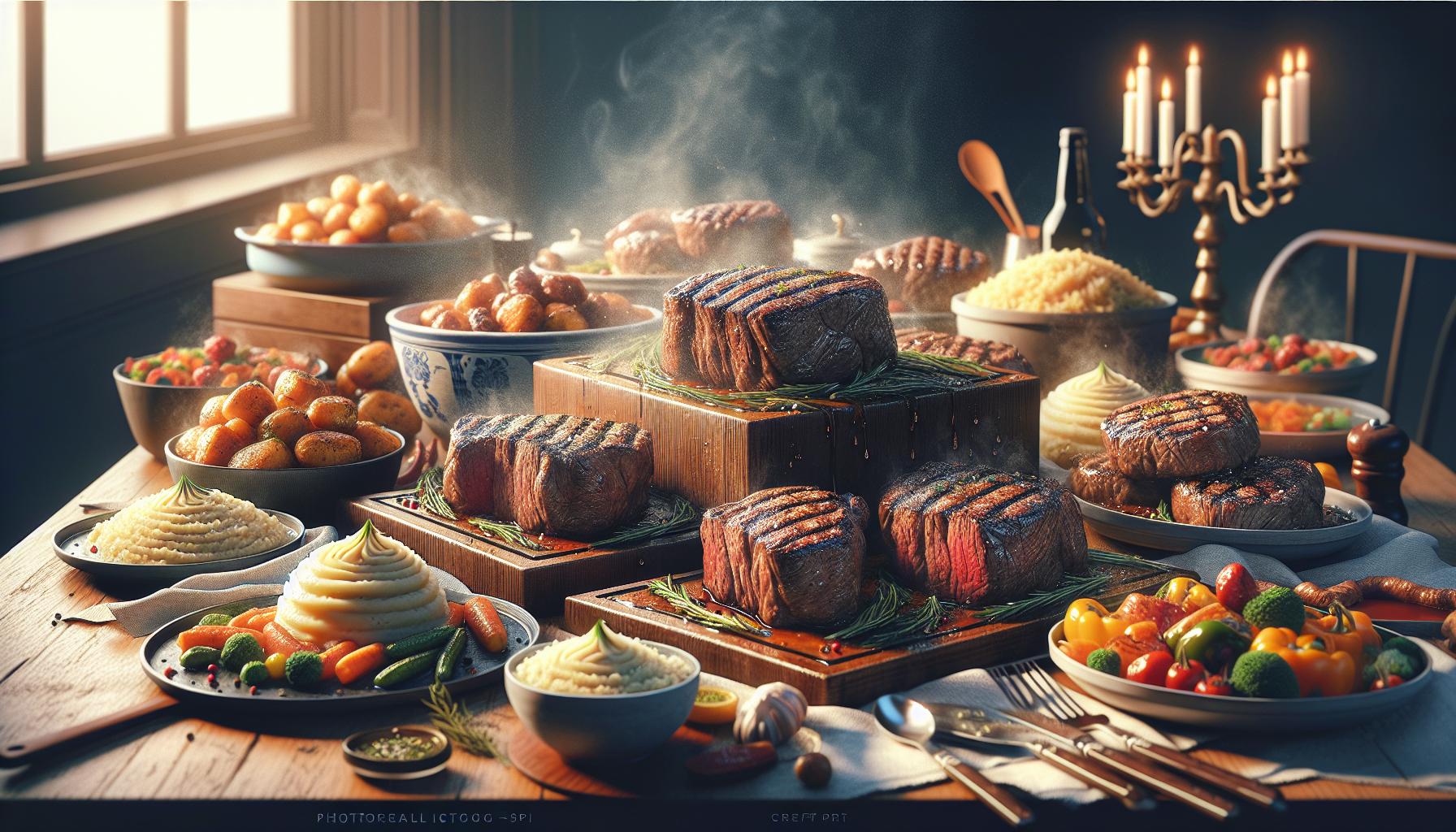This post contains affiliate links. See the affiliate disclaimer here.
Ever found yourself craving a juicy steak but short on time? Enter minute steak, your quick-fix solution for a meaty delight. It’s thin, it’s tender, and it cooks in a flash, making it the perfect choice for a fast-paced lifestyle.
You might be wondering what sets minute steak apart from the rest of the beef in the butcher’s case. It’s all about the cut and the preparation, which ensures you’re never more than a few minutes away from a satisfying meal. Let’s dive into what makes minute steak a go-to for those hectic days.
What is Minute Steak
When you’re eyeing the meat aisles, trying to figure out what cuts will best suit your hectic schedule and pamper your taste buds, minute steak emerges as a winning option. So, what precisely sets this cut apart? Essentially, minute steak is a thin cut of beef, typically from the sirloin or round section of the cow. You might also find it labeled as “cube steak” due to the indents left by a tenderizer, which is often used to break down the fibers of the meat.
Because it’s so thin, usually about a quarter-inch thick, a minute steak lives up to its name by cooking in a flash. It’s designed to zip from pan to plate in a matter of minutes, hence the moniker. The steak’s quick cooking time doesn’t just save you precious minutes; it also preserves the meat’s juiciness and flavor, provided you don’t overcook it.
Preparation methods vary, but many cooks will recommend a swift sear on a hot skillet or griddle to lock in moisture and create a caramelized, golden crust. A high heat and a thin slice ensure that you’re never too far from a satisfying meal. Whether you’re tossing it into a sandwich, serving it alongside eggs for a hearty breakfast, or plating it with mashed potatoes and green beans for a classic dinner, minute steak is as versatile as it is convenient.
Quality minute steak should be:
- Rich in color
- Free from excess gristle
- Even in thickness
Here are a few tips for selecting the best minute steak:
- Opt for uniformity: Look for steaks that are evenly cut to ensure uniform cooking.
- Check for freshness: The steak should have a fresh, not dull, appearance.
- Consider the source: If possible, select steaks from grass-fed, sustainably raised cattle for an ethically sound and potentially tastier option.
With a keen eye and a hot pan, you’ll turn this unassuming cut into culinary gold in minutes.
Characteristics of Minute Steak

When you’re browsing the meat aisle, minute steak stands out due to its distinctive qualities. These characteristics not only define its physical appearance but also affect its culinary performance on your plate.
First and foremost, minute steaks are thin – typically no more than 1/4 inch in thickness. This key attribute allows for rapid cooking, making them an ideal component of a quick meal. Their tenderized surface is not only for show; it plays a crucial role in the cooking process. The indentations incurred from the tenderization break down the muscle fibers, contributing to a tender texture that’s ready to take on flavors.
Uniformity is another crucial aspect. You’ll want to look for steaks that exhibit an even thickness to ensure that they cook at the same rate, giving you a consistently cooked piece of meat throughout. A steak with varying thickness can lead to uneven cooking, where some parts might overcook while others remain underdone.
You should also consider the color and freshness of the steak. A minute steak with a bright red color and a firm feel indicates freshness and quality. Any signs of graying or a slimy texture suggest the meat is past its prime, and it’s best to steer clear of these.
When it comes to content, minute steaks are protein-rich and low in fat, making them a suitable option for those seeking a lean meat option. While they’re low in intramuscular fat known as marbling, they make up for it in ease of preparation and versatility in recipes. They often come from cuts like the sirloin or round, ensuring a full-bodied beef flavor that’s both pronounced and satisfying.
Versatility is one of the minute steak’s strongest suits. Whether you’re crafting a stir-fry, making steak sandwiches, or preparing a traditional Salisbury steak, these cuts can be adapted to a plethora of dishes. The thinness lends itself to absorbing marinades and rubs more readily, opening up a world of flavor possibilities.
Remember, the hallmark of a good minute steak is its ability to transform under the right conditions – it’s all about how you play with the heat and flavors. Choose your minute steak wisely, and you’ll find that they’re not just about saving time; they’re about maximizing the delicious potential of your meals.
How is Minute Steak Prepared

Preparing minute steak is a quick and straightforward process due to its thinness. Start by patting your steaks dry with paper towels to remove any excess moisture. This step is crucial for achieving a nice sear on the surface.
Seasoning is where you can get creative. Most cooks recommend a simple sprinkle of salt and pepper, but feel free to experiment with your own blend of spices and herbs. Keep in mind the thin cut absorbs flavors rapidly, so a little goes a long way.
To cook your minute steak, heat a skillet or griddle over high heat until it’s smoking hot. A cast-iron skillet is ideal for this purpose, as it retains heat well and can give your steak a desirable crust. Add a small amount of oil with a high smoke point, like canola or grapeseed, then carefully lay your steaks in the pan.
Cook each side for just 1 to 2 minutes. The goal is to develop a rich, browned exterior without overcooking the interior. Use tongs to flip the steaks gently. Due to their size, they’ll cook through rapidly, so it’s important not to leave them unattended.
Once cooked to your preference, remove from the heat immediately. Let them rest for a few minutes before slicing or serving. This rest period allows the juices to redistribute, ensuring your minute steak will be as tender and flavorful as possible.
For added flavor, consider deglazing your pan with a splash of wine or broth after your steaks are done. This technique creates a simple, yet delicious sauce that you can pour over the steak to amplify its taste.
Remember, minute steaks are as versatile as they are quick to prepare. Whether you’re looking to add them to a salad, sandwich, or just enjoy them as the star of the plate, the methods above will guarantee you a tasty, tender meal in minutes.
Cooking Minute Steak

When you’re ready to cook your minute steak, you’ll need a heavy skillet or grill pan to ensure even heat distribution. Preheat your pan on high heat until it’s almost smoking; this is crucial for getting that desirable sear on the outside while keeping the inside tender.
Before you place your steak in the pan, make sure it’s patted dry to remove any excess moisture. This helps in achieving a better crust. If you’re seasoning the steak, now’s the time to do it. A simple sprinkle of salt and pepper often suffices, but feel free to get creative with your favorite herbs and spices.
Once the pan is hot, lay your steak down and don’t move it. Let it sear for about one minute, then flip it using tongs or a spatula. Cook the other side for the same amount of time. For those who prefer a medium-rare finish, a minute on each side should be enough due to the steak’s thinness. If you prefer your steak more well-done, it might only take an additional 30 seconds to 1 minute more per side.
Remember, minute steak is best enjoyed slightly pink in the middle. Overcooking can lead to a tough and chewy texture, which is far from the quick, delightful bite you’re aiming for.
After cooking, transfer your steak to a plate and tent loosely with foil for a few minutes. This allows the juices to redistribute, ensuring each bite is as flavorful as possible. During this time, take advantage of the leftover bits in the pan. A splash of wine or broth can deglaze the pan, creating a delicious sauce that perfectly complements your steak.
- Always start with a completely dry steak to ensure proper searing.
- Avoid overcrowding the pan, as this can lead to steaming rather than searing the meat.
- Invest in a meat thermometer to ensure your desired degree of doneness without overcooking.
- Consider marinating your minute steaks if you’re looking for an extra flavor boost, but keep the marinating time short due to the cut’s thin nature.
Cooking minute steak is about simplicity and speed. Armed with these tips and techniques, you’re well on your way to mastering a quick, succulent steak dinner that’s sure to impress.
Recipe Ideas for Minute Steak

With the basics of minute steak preparation down, it’s time to jazz up your meal with some creative recipe ideas. Minute steak is incredibly versatile, making it a perfect canvas for a variety of flavors. You can go traditional or experiment with global spices to elevate your quick steak dinner.
Classic Pepper Steak
- Start by searing your minute steaks as usual.
- Add sliced onions and bell peppers to the pan after flipping.
- Season with black pepper and a touch of Worcestershire sauce for a robust flavor.
- Serve with fluffy mashed potatoes or over steamed rice.
Asian-Inspired Stir Fry
- Slice the minute steaks thinly against the grain.
- Stir-fry with your choice of vegetables such as broccoli, snow peas, and carrots.
- Toss in a savory mix of soy sauce, garlic, ginger, and a hint of honey.
- Enjoy it over a bed of noodles or rice, finishing with a sprinkle of sesame seeds.
Steak Fajitas
- Cut your steaks into strips and cook with a blend of cumin, chili powder, and lime juice.
- Sauté with onions and colorful bell pepper slices.
- Wrap the mixture in warm tortillas, topping with salsa and avocado for a Mexican flair.
Steak Salad
- Cook your steak whole and let it rest.
- Slice into strips and lay over a bed of mixed greens, cherry tomatoes, and crumbled cheese.
- Drizzle with a balsamic vinaigrette or your dressing of choice for a light, yet satisfying meal.
Remember, with minute steak, the key is to keep it simple to preserve the tenderness. Whether you’re looking for comfort food or something a bit more exotic, these recipes show just how adaptable minute steak can be. Pair with your sides of choice, and you’ve got a meal that’s bound to impress without the hassle of lengthy cooking times. Don’t be afraid to tweak these ideas to fit your taste; minute steak is your weeknight-friendly option that adapts to any flavor profile.
Conclusion
You’re now well-equipped to turn your minute steak into a culinary delight. Remember, the key is in the preparation and cooking technique—quick and high heat for that perfect sear. Letting your steak rest seals the deal for a juicy finish. With the versatility of minute steak, you can explore a variety of flavors, whether it’s a classic pepper steak or an exotic stir-fry. So go ahead, impress your taste buds and your guests with your newfound minute steak mastery.
Frequently Asked Questions
What is minute steak?
Minute steak is a thin cut of beef, usually from the sirloin or round, that is pounded or tenderized. It’s known for cooking quickly, hence the name “minute.”
How do I prepare minute steak?
To prepare minute steak, pat the steaks dry, season them to your liking, and cook them quickly over high heat. Let them rest before serving, and consider deglazing the pan for extra flavor.
What are the important tips for cooking minute steak?
Key tips for cooking minute steak are starting with a dry steak to ensure proper searing, avoiding overcrowding the pan, using a meat thermometer for desired doneness, and optionally marinating for additional flavor.
Can I marinate minute steak?
Yes, marinating minute steak can add more flavor. Since the cut is thin, it doesn’t require a long marination time.
What are some recipe ideas for minute steak?
Some recipe ideas for minute steak include classic pepper steak, Asian-inspired stir fry, steak fajitas, and a steak salad. Minute steak is versatile and adapts well to various flavors and cuisines.

